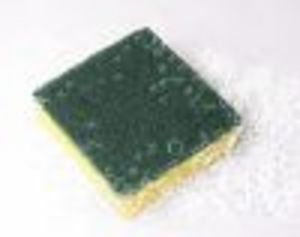Developing children are sponges when it comes to language, but sometimes, some take longer than others or require a push to start talking. There are strategies that every parent or speech-language therapist can utilize for the early intervention of language development. They are most effective when implemented on a daily basis.
Talk a lot and label, label, label!
Children can only learn what they’re exposed to, so expose them to as much language as you can. Although they may not be talking, they are listening and learning every time you say something. Take advantage of environments that are new to the child. This provides you with new contexts to teach a whole new set of vocabulary in. However; it is important that you talk slowly and in simple terms. Use lots of language, but keep it simple, direct, and to the point.
Parallelism (Talk out loud about what you’re doing)
Talk about what you are doing out loud while your child is with you. For example, while you are putting the milk in the refrigerator, literally say out loud, “I’m putting the milk in the refrigerator.” Yes, it is a bit unnatural and it takes some getting used to, but you will be providing your child with an excellent model of language and expanding their awareness of vocabulary, tense, and the different forms language can take.
Expand on what they say.
For example, if your child says, “ball” while playing with a red ball, expand on it and say, “red ball.” Add adjectives to their words, so they can learn new vocabulary and new descriptive words. Over time, you can add different parts of speech in as well to make the sentence a bit more complex and meaningful. For example, “Roll the red ball.”
Give them choices.
One of the simplest, but most effective ways to get your child to talk is to provide them with a choice and withhold the item they want until they use their speech to request it.
Try this: When you know they want a snack, give them a choice of one you know they really want, and one they probably won’t pick. Hold them up just far enough that they can point to the one they want. When they have indicated which snack they desire, label it for them. For example, if you hold up a banana and a cookie, and they point or reach for the cookie, you will say, “cookie.” Do not give it to them until they say cookie or at least attempt to say the word.
Or this: You can also try this strategy with toys. Hold up a red and blue ball. They cannot get away with just saying, “ball” because you will not know which ball they want. The child will have to learn to ask for the specific color. When the child reaches for the red ball, “Say, oh you want the red ball.” Eventually, you can continue to model the phrase, but also require them to say it as well in order to receive the red ball. For example, “Oh, you want the red ball. Say red ball.” Then, withhold the ball until they say “red ball.”
Sabotage
Although this one sounds cruel, it will work! Take one of your child’s toys and break it (But make sure you can easily fix it!)
Try this: Take a wheel off of your child’s favorite truck or an arm off your child’s favorite doll. It will without a doubt cause confusion and hopefully force the child to say something. You may have to model a proper reaction, but you can get a “help” or a “wheel,” or an “arm” out of it.
Place desired item out of reach.
Place a desired item up on top of a shelf you know your child cannot reach. Next time they want that item, they will have no choice but to use their speech to request it. A large portion of the success of this strategy depends on you. Do not give in and simply hand it to them if they start crying. Model the word or phrase you would like them to say if they will not or cannot do it independently. Once they have used the correct label to request the item, reinforce them immediately by handing them the desired item and saying something like, “Oh, you want the car! Sure, here’s car.” This way, they will learn that when they use their speech, it carries meaning to others around them and can help them obtain what they want or need.
Plan a routine.
Having a daily routine is a very powerful language development tool. Pick one or two activities that occur on a daily basis and embed the same language into them each and every time that routine takes place. Doing this allows for the child to learn new language more easily because they will hear the same vocabulary used everyday within the same context, and they will learn to associate the words with the actual context/items present during that routine. In addition, because routines take place everyday, the situation surrounding the child is a comfortable one, since they are used to it. This allows them to focus only on the language learning, and not so much on the curiosity or anxiety that may be caused by new situations/environments.
Try this: Each morning when your child goes to brush his or her teeth, follow the same sequence of events and use the same phrases. At first, model the phrases. Don’t expect them or force them to say anything on their own. Model, model, model so they can learn the routine simply by being a part of it. For example, say, “Time to brush teeth!” each time you pick up the toothbrush. Then, as you feel they have gotten used to the routine, you can start only providing part of that phrase, because eventually they will be so used to hearing you say it, they will be able to complete the rest of that phrase themselves. For example, “Time to brush…” Depending on the level of your child, you may have to start by having them fill in only the last word, “teeth,” and eventually increase the number of words they fill in; “Time to….
Repetitive songs and books
Songs and stories are also very good language expansion tools. This is due to their repetitive nature. When a child hears something over and over, it becomes second nature to them.
Try this: Read a repetitive picture book over and over with them (i.e., Brown Bear by Eric Carle). This way, they will learn to associate certain pictures with the corresponding words. Since the book is repetitive in nature, the child will hear the same phrases/words numerous times. They will start to pick up on the language and eventually, you can expect them to speak the phrases along with you. Try as you did with the routines and have them complete the phrase you have been working on. Start with one word completions and increase it over time as they become masters of each step of the process.
Bottom line:
Use any of these strategies you feel comfortable with, but I encourage you to try each of them. They can all be easily done in your own homes or therapy sessions. Even if you cannot remember these strategies off the top of your head, the number one thing to remember is that kids are always listening and absorbing what you say, especially in the first few years of life. Talk slowly and in simple terms and don’t forget to label and be a great language model!
Reference: Paul, Rhea (2007). Language Disorders: From Infancy Through Adolescence: Assessment & Intervention.



